Lexus IS (1998-2023) firing order — what is it?
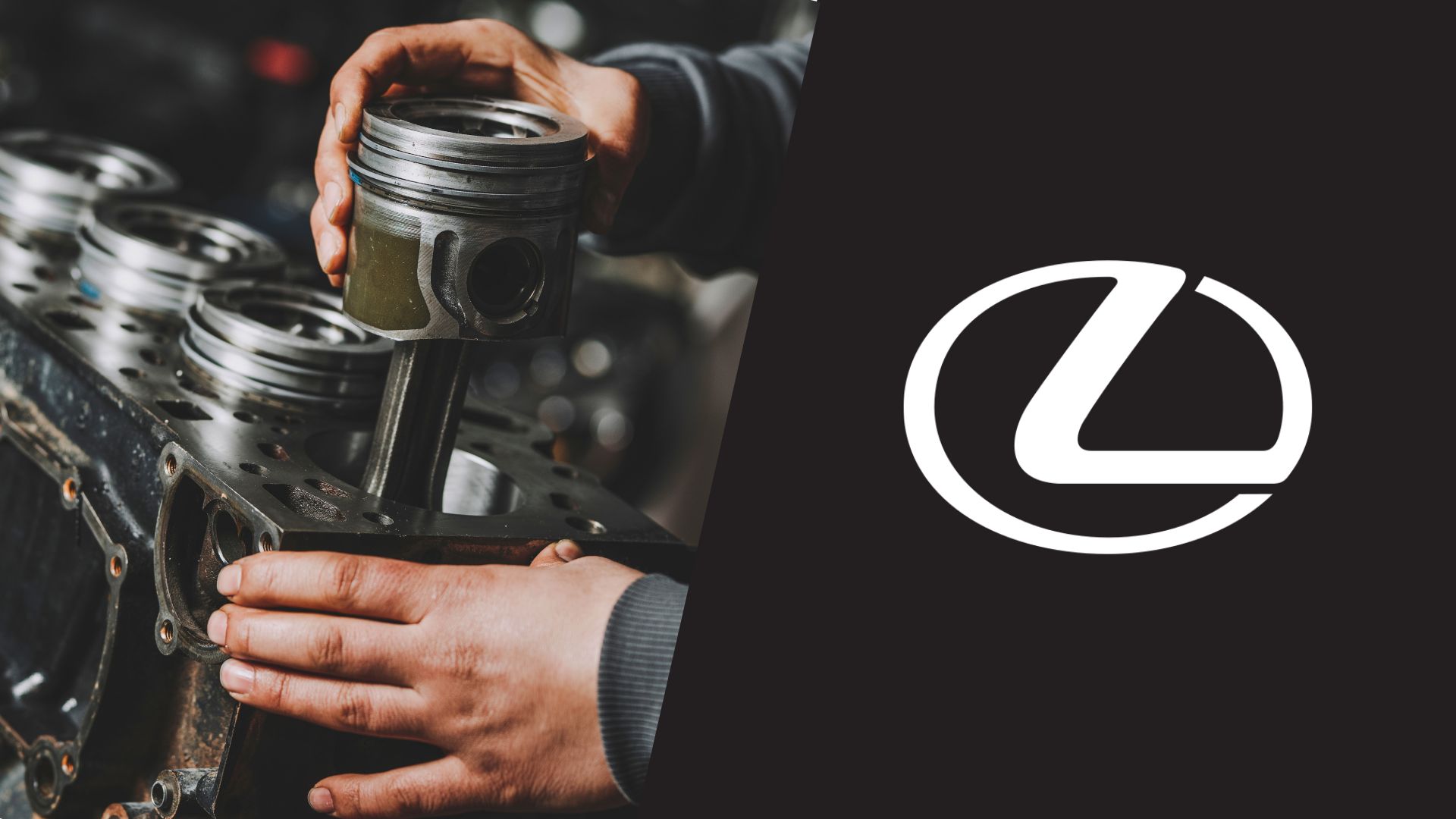
The IS model is a flagship vehicle from the Lexus executive mid-size sedan category. Now in its third generation, it’s still a favorite pick of many enthusiasts. During three generations of the IS a lot of dependable engine options have been used, from four-cylinders to V8s.
So, this guide on Lexus IS (1998-2023) firing order should help you navigate through the cylinders of your particular engine and sort minor firing issues. Our team will cover the details concerning the cylinder layout as well, so let’s get into it.
| LEXUS IS YEARS | ENGINE | FIRING ORDER |
|---|---|---|
| 1st Gen (1998-2004) | 2.0L | 1-3-4-2 |
| 3.0L | 1-5-3-6-2-4 | |
| 2nd Gen (2005-2012) | 2.5L V6 | 1-2-3-4-5-6 |
| 3.0L V6 | 1-2-3-4-5-6 | |
| 3.5L V6 | 1-2-3-4-5-6 | |
| 5.0L V8 | 1-8-7-3-6-5-4-2 | |
| 3rd Gen (2013-present) | 2.0L turbo | 1-3-4-2 |
| 2.5L | 1-2-3-4-5-6 | |
| 3.5L V6 | 1-2-3-4-5-6 | |
| 5.0L V8 | 1-8-7-3-6-5-4-2 |
First-generation Lexus IS (1998-2004) firing order
The first-gen Lexus IS model featured a 2.0-liter engine as the base option and a famous straight-six 2JZ engine as the higher-trim spec. It was also the IS model with the lowest number of available engine options, so we’ll discuss those two engines first before we move on to the next model.
Lexus IS 2.0L firing order
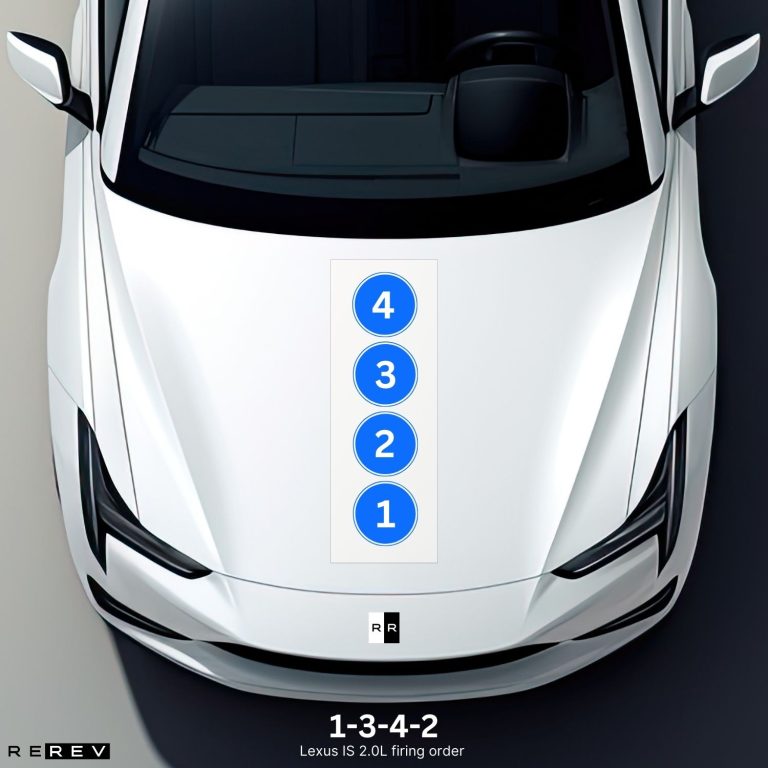
The Lexus IS 2.0L firing order is 1-3-4-2 and such firing order is pretty common for all the Lexus four-cylinder engines. It’s a straight-four engine, but a specific thing about Lexus inline-four engines is that they are oriented front to back.
In other words, the first cylinder is the front-most cylinder of the engine, while cylinders 2, 3, and 4 follow up toward the rear end.
Lexus IS 3.0L firing order
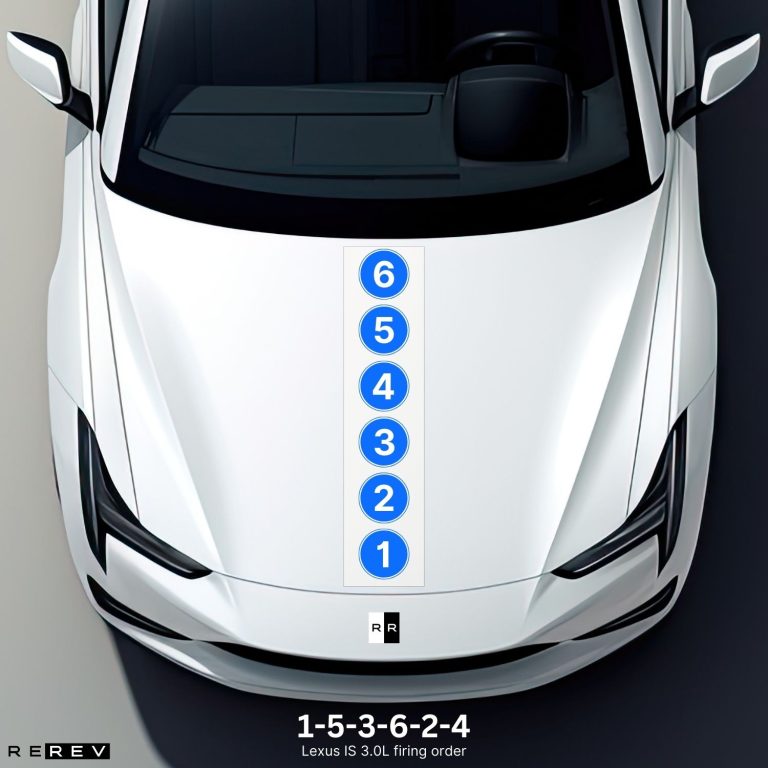
Unlike the 2.0-liter four-cylinder engine, the 3.0-liter option was much more rare for this model. The specific thing about this engine is that it’s a 2JZ powertrain based on the engine from Toyota Supra, only this one isn’t turbocharged.
So, the Lexus IS 3.0L firing order is 1-5-3-6-2-4 and this one is important to remember because there’s another 3.0-liter engine used in the following generation models, only it’s a V6 with a different cylinder configuration. For this straight-six engine, the cylinders are ordered from the first one at the front of the engine toward the sixth one at the rear end in a straight order.
Second-generation Lexus IS (2005-2012) firing order
For the second-gen Lexus IS model, the engine selection was updated with a few more six-cylinder options, but this time these were all V6 engines. So, their firing order is significantly different from the 3.0L engine used in the previous generation of the IS.
There was also a V8 engine introduced in the engine lineup for the first time with this generation in the sport Lexus IS-F version, so let’s take a closer look.
Lexus IS 2.5L firing order
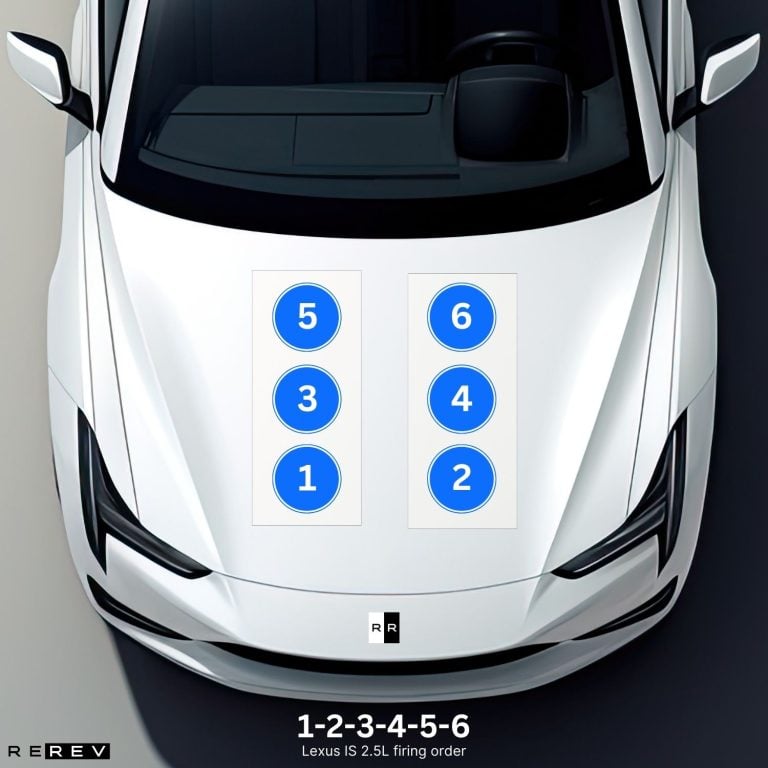
The Lexus IS 2.5L firing order is 1-2-3-4-5-6 and this engine is a longitudinal V6. That means the cylinders are laid out in two cylinder banks, including the odd numbers 1, 3, and 5 on the passenger’s side, and even cylinder numbers 2, 4, and 6 on the driver’s side.
All the cylinders are ordered front to rear in their respective banks, so that makes it easier to do the cylinder numbering.
Lexus IS 3.0L V6 firing order
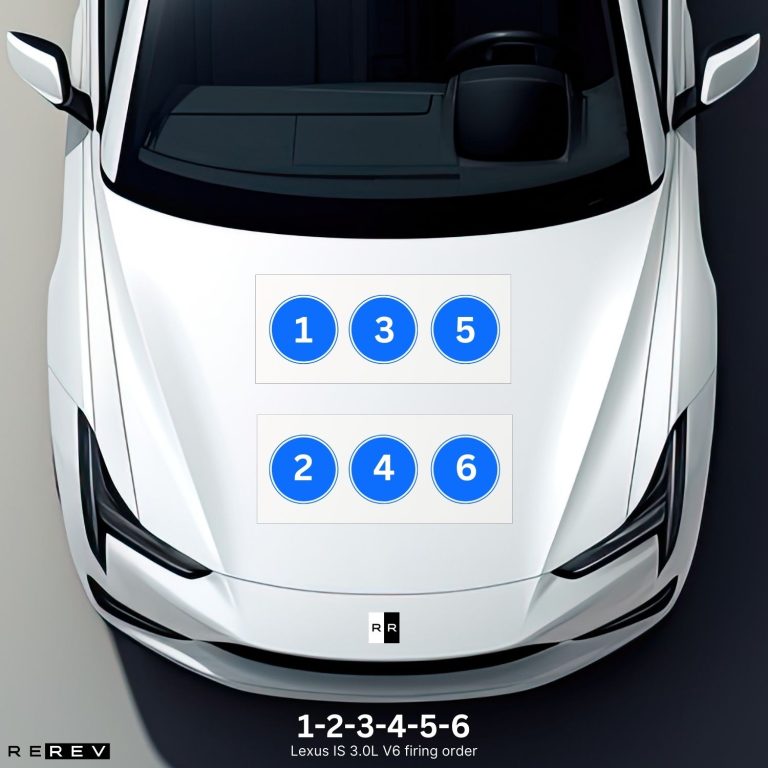
As for the 2.5-liter engine, the Lexus 3.0L firing order is also 1-2-3-4-5-6, but this time the engine’s cylinders are laid out differently. The reason for this is the transverse cylinder placement of the engine and that means the cylinders are divided into two banks, one being on top of the other.
So, the upper cylinder bank features cylinder numbers 1, 3, and 5, while cylinders 2, 4, and 6 are ordered in the lower cylinder bank from left to right.
Lexus IS 3.5L V6 firing order
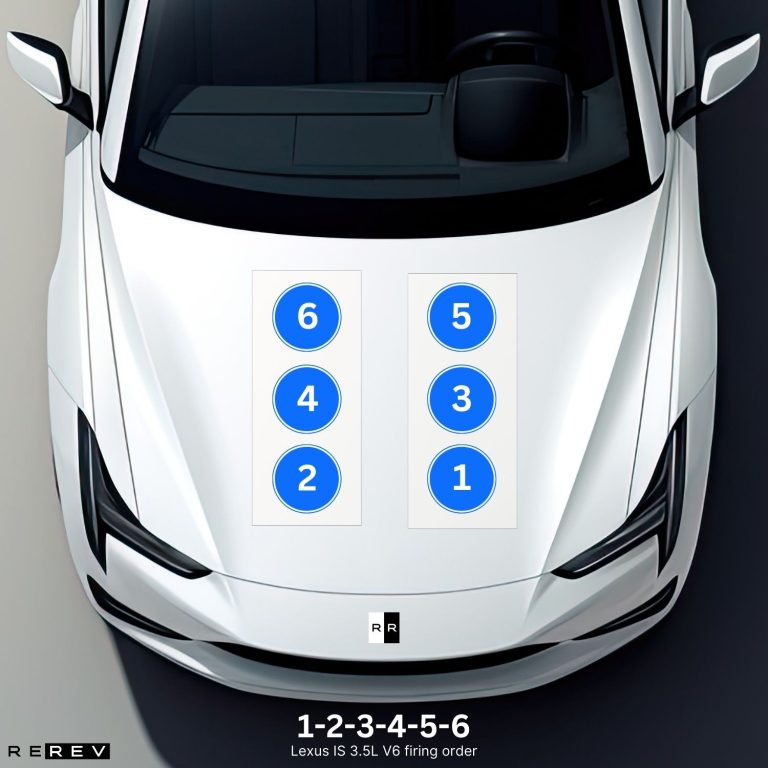
The largest V6 engine option featured in the second-gen Lexus IS was the 3.5-liter engine, and its firing order is 1-2-3-4-5-6. However, we once again have a different cylinder placement in this case, and cylinders are ordered within the driver’s side and the passenger’s side banks.
Cylinders 1, 3, and 5 are laid out on the driver’s side front to rear, while the opposite cylinder bank houses cylinders 2, 4, and 6 also front to rear.
Lexus IS 5.0L firing order
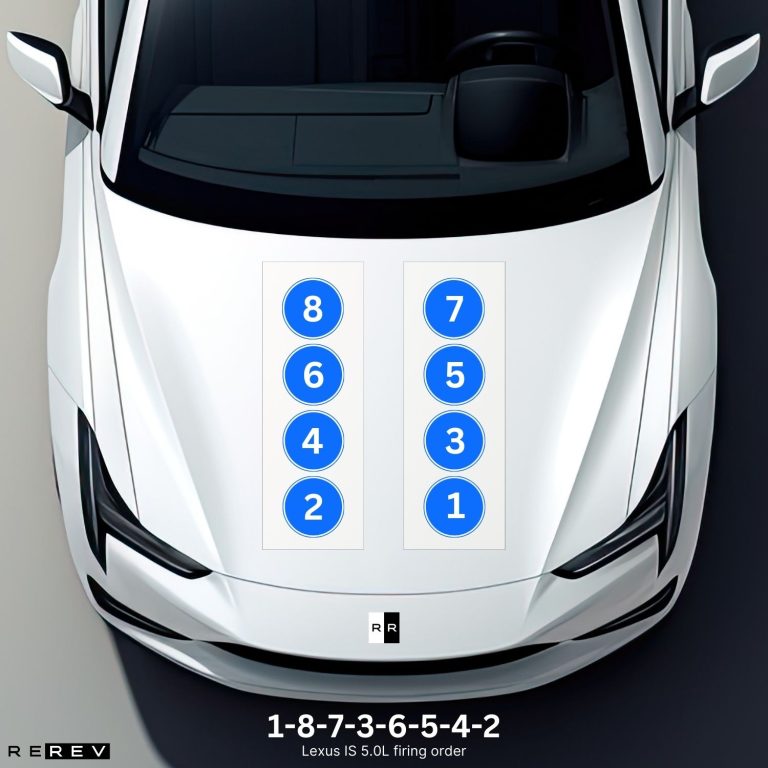
If you own the “F” version of the car, the Lexus IS 5.0L firing order 1-8-7-3-6-5-4-2 and this engine is a regular V8 made by Toyota and Lexus. So, the driver’s side cylinders are laid out in order 1, 3, 5, and 7 front to rear, while passenger side cylinders are 2, 4, 6, and 8 front to rear.
Third-generation Lexus IS (2013-present) firing order
The third-gen IS model featured a lot of common engines with the second-gen model, and these include the 2.5-liter and 3.5-liter V6 engines, along with the V8 from the IS-F version.
The only newly-added engine for this generation model is the 2.0-liter turbo petrol engine, and we’ll discuss that one since we already talked about the previously mentioned ones.
Lexus IS 2.0L turbo firing order
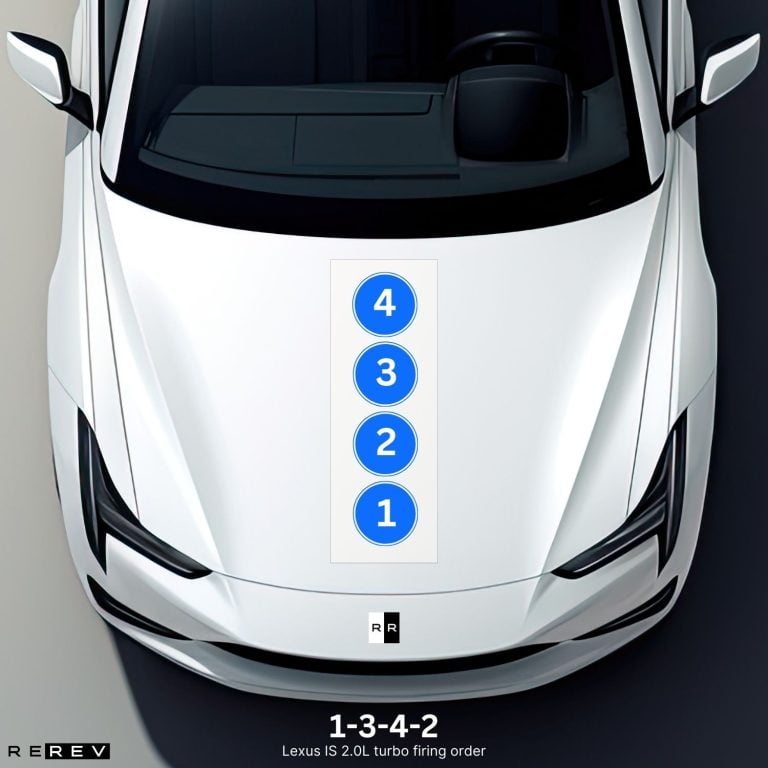
The Lexus IS 2.0L turbo firing order is 1-3-4-2, and cylinders are ordered 1 to 4 front to rear in a straight line. So, it’s similar to the 2.0-liter engine used in the first-gen IS model, with the addition of the forced induction turbo system.
Still, the basic maintenance needs are the same, and you’ll have all it takes to properly address misfiring issues and similar problems.
Our take
As fellow automotive enthusiasts, our team sincerely aims to help with the maintenance of your Lexus IS, and hopefully, this guide gives you all the right tools. Make sure to differentiate between the straight-six and the V6 3.0-liter engine and thoroughly follow the firing pattern and cylinder arrangement outlined for each engine.